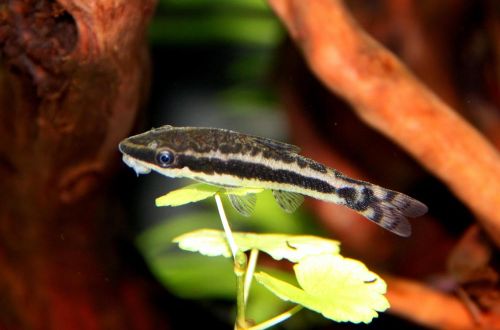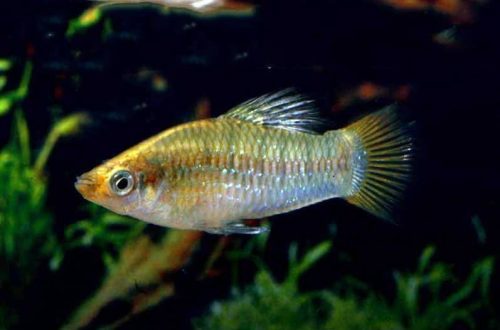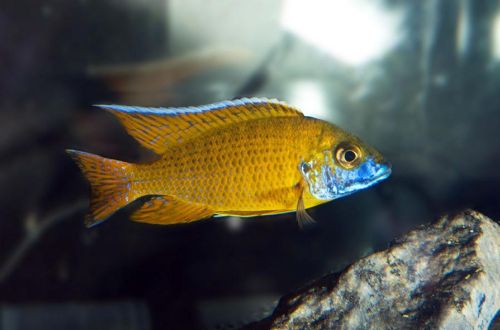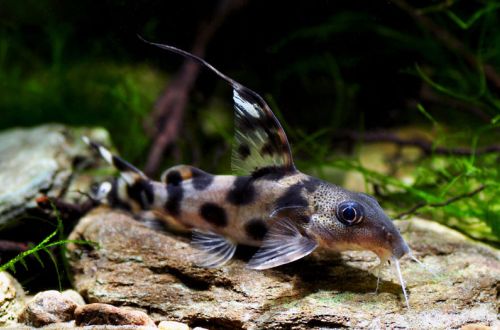
Otocinclus affinis
Otocinclus affinis, scientific name Macrotocinclus affinis, belongs to the family Loricariidae (Mail catfish). Peaceful calm fish, not able to stand out from other active species. In addition, it has a rather nondescript color. Despite this, it is widespread in the aquarium trade due to one feature. An exclusively plant-based diet of algae has made this catfish an excellent algae control agent. Just for these purposes it is purchased.

Contents
Habitat
It comes from South America from the region near Rio de Janeiro (Brazil). It lives in small tributaries of larger rivers, floodplain lakes. Prefers regions with dense aquatic vegetation or herbaceous plants growing along the banks.
Brief information:
- The volume of the aquarium – from 40 liters.
- Temperature – 20-26°C
- Value pH — 6.0–8.0
- Water hardness – soft to medium hard (5-19 dGH)
- Substrate type – any
- Lighting – moderate
- Brackish water – no
- Water movement is weak
- The size of the fish is up to 5 cm.
- Nutrition – only plant foods
- Temperament – peaceful
- Content alone or in a group
- Life expectancy about 5 years
Description
Adult individuals reach a length of about 5 cm. Sexual dimorphism is weakly expressed. It is difficult to distinguish a male from a female, the latter looks somewhat larger. Outwardly, they resemble their close relative Otocinclus broadband and are often sold under the same name.
The coloration is dark with a white belly. A narrow horizontal stripe runs along the body from the head to the tail of a golden hue. A characteristic feature is the structure of the mouth, designed to scrape algae. It resembles a sucker, with which the catfish can attach to the surface of the leaves.
Food
As mentioned above, algae form the basis of the diet. Acclimatized fish are able to accept dry vegetable foods, such as spirulina flakes. However, algae growth should still be ensured in the aquarium, otherwise there is a high risk that the catfish will starve. An excellent place for their growth will be natural driftwood under bright lighting.
Blanched peas, pieces of zucchini, cucumbers, etc. are allowed as an additional food source.
Maintenance and care, arrangement of the aquarium
Otocinclus affinis is undemanding and easy to keep if enough plant food is available. The optimal size of the aquarium for several fish starts from 40 liters. The design should provide for a large number of plants, including those with wide leaves, where the catfish will rest for a long time. Natural wood driftwood is recommended, for the reasons stated in the previous paragraph. They will become the basis for the growth of algae. Oak or Indian almond leaves are added to mimic water conditions characteristic of their natural habitat. In the process of decomposition, they release tannins, giving the water a tea shade. It is believed that these substances have a beneficial effect on the health of fish, inhibiting pathogenic bacteria and organisms.
It is worth noting that in aquariums with rich flora, special lighting modes are needed. In these matters, it is advisable to take the advice of experts, consult with them. You can simplify the task by using unpretentious mosses and ferns, which sometimes look no worse, but do not require excessive care.
Maintaining stable water conditions is critical to maintaining balance in the aquarium’s biological system. The filter is important. For example, in small tanks with a small number of fish, simple airlift filters with a sponge will do. Otherwise, you will have to use external filters. Those that are placed inside are not recommended for installation, they create excess flow.
Mandatory aquarium maintenance procedures are weekly replacement of part of the water (15–20% of the volume) with fresh water and regular removal of organic waste.
Behavior and Compatibility
Catfish Otocinclus affinis can live both alone and in groups. No intraspecific conflicts were noted. They belong to calm species. Compatible with most other peaceful fish of comparable size. Harmless to freshwater shrimp.
Breeding / breeding
At the time of writing, no successful cases of breeding this species in home aquariums have been recorded. Supplied mainly from commercial fish farms in Eastern Europe. On the American continents, individuals caught in the wild are common.
Fish diseases
The main cause of most diseases is unsuitable living conditions and poor-quality food. If the first symptoms are detected, you should check the water parameters and the presence of high concentrations of hazardous substances (ammonia, nitrites, nitrates, etc.), if necessary, bring the indicators back to normal and only then proceed with treatment. Read more about symptoms and treatments in the Aquarium Fish Diseases section.





